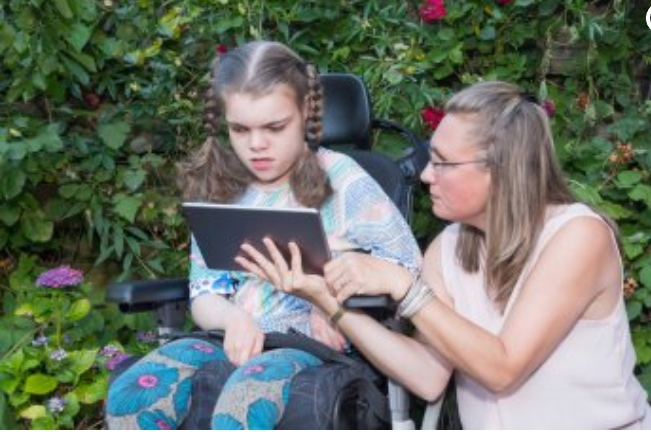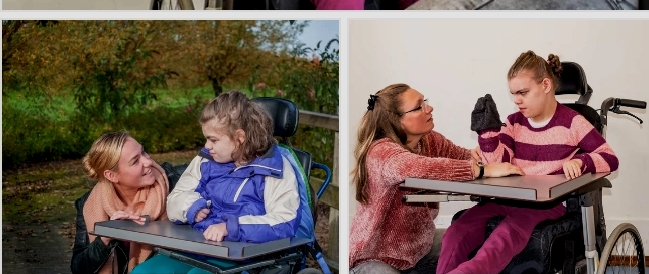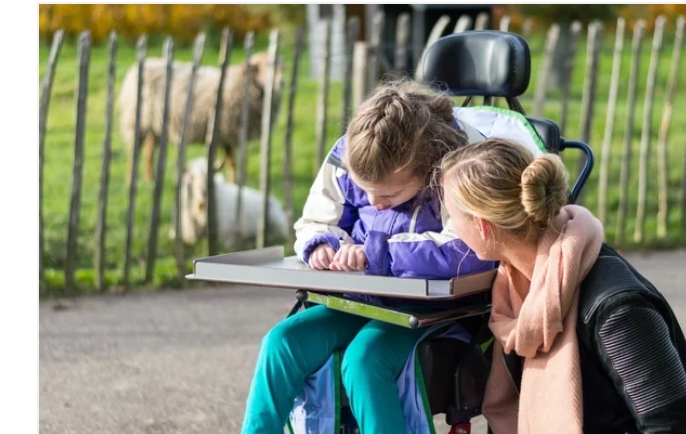Communication is an essential part of our day to day activities, it helps us interact with one another, helps us express our feelings, and at the same time our needs. While many people associate communication with speaking, it encompasses much more than that. Babies begin communicating through gurgling, giggling, and crying from a very early age. However sadly enough not everyone finds the traditional way of communicating with others, which is speech, accessible or effective , this is where we bring in what, we refer to as AUGMENTATIVE and ALTERNATIVE COMMUNICATION (AAC),
WHAT IS AAC
Augmentative and Alternative Communication (AAC) is a method of communication used by individuals who have difficulty speaking. Augmentative communication involves using tools or strategies to enhance a person's speech, while alternative communication involves using methods other than speech to communicate. This can include using devices such as tablets or communication boards to type or speak words, as well as low-tech methods like using pictures or gestures to convey messages.
Augmentative Alternative communication includes a variety of methods and tools that can be customized so as to suit the specific requirements of each person. (This is because of the fact that individual needs and requirements varies, which is why it’s important that families consult with a speech-language pathologist (SLP) who has experience with AAC.) These options may consist of sign language, picture communication boards, communication devices, and eye gaze technology. Through the use of these alternative techniques, individuals who struggle with speaking or comprehending spoken language can effectively convey their ideas and emotions.
Alternative communication methods not only improve communication skills but also aid in language development and literacy. Visual aids, symbols, and other forms of communication can enhance understanding and usage of language, especially for those with developmental disabilities, autism, or communication disorders.
Alternative communication can help individuals with communication challenges to connect with others and break down barriers. It allows them to express themselves and participate more fully in social interactions, relationships, and daily activities, leading to improved self-confidence, independence, and overall quality of life.
Furthermore, alternative communication methods can be empowering for individuals who may have felt isolated or misunderstood due to their communication challenges. By providing them with a way to express themselves and be heard, alternative communication can help individuals build self-esteem, assert their needs and preferences, and advocate for themselves in various settings.
MYTHS AND MISCONCEPTIONS ABOUT AAC
Myth 1. AAC should only be considered when a child is older, or as a last resort after trying other methods.
FACT: It is a fact that AAC can be introduced at a very young age, even before a child reaches one year old. Utilizing AAC does not hinder a child’s ability to speak. If a child is struggling with communication, there is no need to delay in considering AAC as an option. It can be discussed with a pediatrician and speech-language pathologist at any time, including as part of Early Intervention programs available in all States and territories in the U.S. AAC should be viewed as an early intervention tool to assist with communication, rather than a last resort.
Myth 2. AAC is just for home or school.
Fact: It is essential for AAC to be accessible to a child at all times, not just at home or school. Just as individuals who use verbal speech always have their voice with them, a child should always have their AAC tools on hand to communicate their desires and requirements. This means that AAC tools should be taken to all medical appointments and other outings.
Myth 3: AAC interferes with verbal speech development, and it’s better to work exclusively on oral speech.
Fact: Contrary to popular belief, AAC does not hinder verbal speech development; in fact, research indicates that it can actually support and enhance language skills. While some individuals may use AAC permanently, others may only require it temporarily. Utilizing AAC can alleviate frustration, improve communication abilities, and lay the groundwork for enhanced language development in infancy and toddlerhood, ultimately benefiting literacy skills in the future.
. It is crucial to recognize that there is no one universal method that will work for everyone, and that a tailored approach is necessary to ensure successful communication outcomes. Collaboration with a team of experts can help identify the most suitable tools and techniques for each individual, ultimately leading to improved communication and quality of life.
In summary, alternative communication methods are essential for individuals with communication challenges as they help break down barriers, build connections, and enhance quality of life by providing a means for self-expression, social interaction, and inclusion. Recognizing the significance of alternative communication is crucial for promoting inclusivity for all individuals.
Posted Using InLeo Alpha


